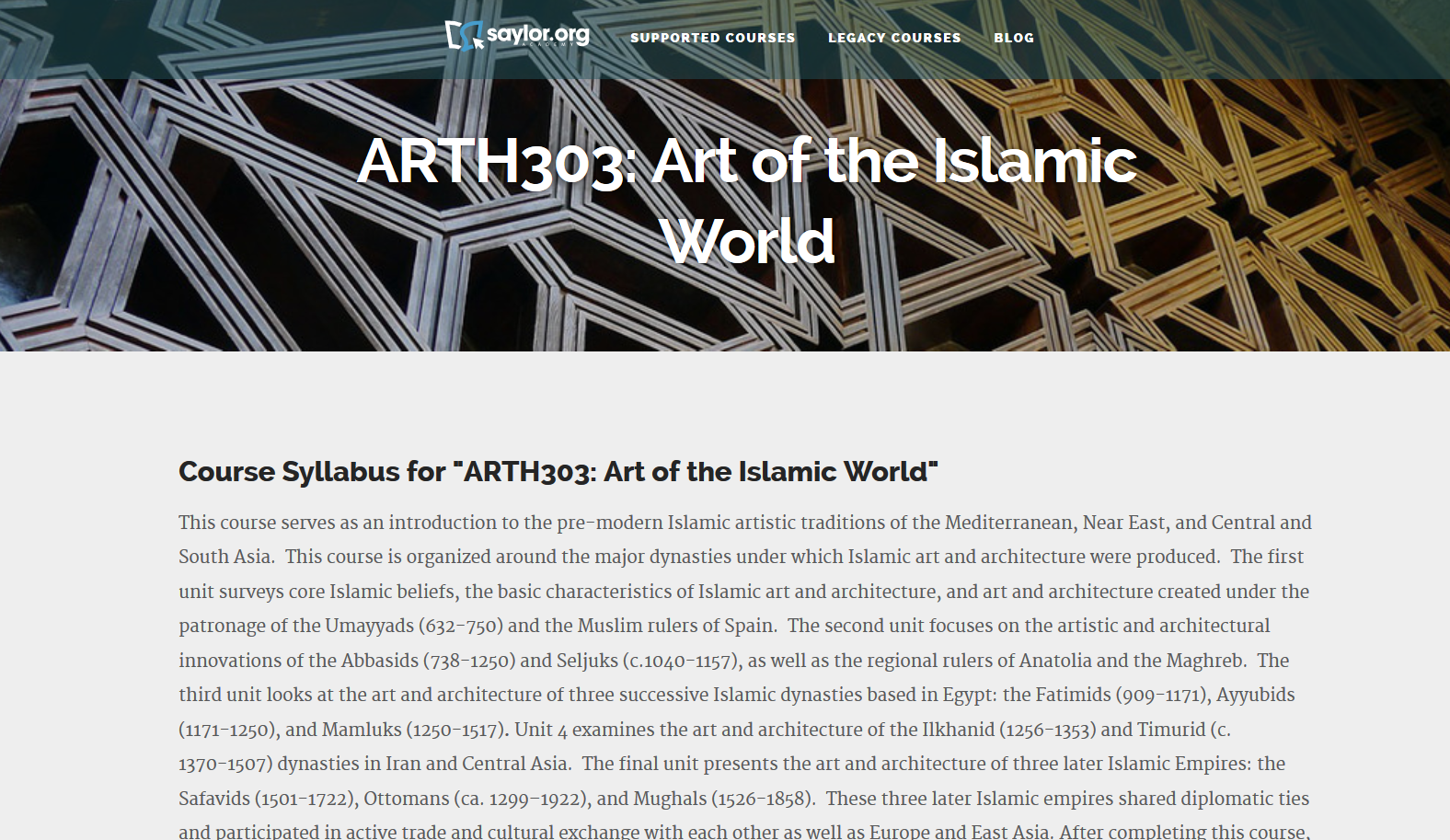فنون العالم الإسلامي
Language of Presentation: English
Media Format: Streaming Video, Webpage
School Level: College/University
Institution/Provider: The Saylor Foundation
Author:
Collection:
Condition of Use: Public Domain Description:
يهدف هذا المنهج الدراسي لأن يكون بمثابة مقدمة في التقاليد الفنية الإسلامية في مرحلة ما قبل الحداثة في منطقة البحر الأبيض المتوسط والشرق الأدنى ووسط وجنوب آسيا. يتناول هذا المنهج الدراسي المعتقدات الإسلامية الأساسية، والخصائص الأساسية للفن وفن العمارة الإسلامي في مختلف العصور وتحت ظل مختلف الأنظمة الملكية أو الحزبية. عند إكمال هذا المقرر بنجاح يمكن للطالب أن: يتعرّف على المعتقدات الأساسية في الإسلام؛ والخصائص الأساسية في الفن الإسلامي والأشكال الرئيسية في فن العمارة الإسلامي؛ والتعرّف على الأعمال الفنية والآثار المهمة المنجزة في مرحلة ما قبل عصر الحداثة في الشرق الأوسط وشمال أفريقيا، وإسبانيا، وجنوب آسيا؛ شرح كيف ساهمت المعتقدات الأساسية في الإسلام في التأسيس للخصائص الأساسية للفن والعمارة الإسلاميين، وأعمال الفن والعمارة المنجزة في العالم الإسلامي من منظور علماني؛ التعرّف على الأسر المالكة التي حكمت العالم الإسلامي؛ شرح الدور المهم الذي لعبته رعاية الفن والعمارة لتعريف ماهية الملكية. (تاريخ الفنون 303)
This course serves as an introduction to the pre-modern Islamic artistic traditions of the Mediterranean, Near East, and Central and South Asia. It surveys core Islamic beliefs, the basic characteristics of Islamic art and architecture, and art and architecture created under each dynasty and ruling party. Upon successful completion of this course, the student will be able to: identify the core beliefs of Islam, the major characteristics of Islamic art, and the major forms of Islamic architecture; identify major pre-modern Islamic works of art and monuments from the Middle East, Northern Africa, Spain, and South Asia; explain how the core beliefs of Islam contributed to the basic characteristics of Islamic art and architecture and the secular art works and architecture of the Islamic world; identify the succeeding dynasties that ruled the Islamic world; explain the important role that the patronage of art and architecture had played in definitions of kingship. (Art History 303) >

